There is no single restoration solution that will solve Louisiana’s land loss crisis. Maintaining as much of Louisiana’s coast as possible will require a suite of restoration projects and programs planned and operated together to maximize their effectiveness and benefits over time, allowing land to be built and sustained in a way that surpasses the benefits of any single project or project type.
Sediment Diversions
 Sediment diversions mimic nature’s historic land-building processes by using the power of the river to move sediment and fresh water from the river into nearby basins. This project type can not only build new land but also provide a sustainable source of sand and mud necessary to sustain and increase the health of existing wetlands over time. Sediment diversions can also re-establish or maintain the fresh end of the estuary, originally lost to saltwater intrusion, ensuring that the range of fresh to saltwater habitats that makes Louisiana’s estuaries so productive persists into the future. Sediment diversions also help sustain nearby marsh creation, barrier island and ridge restoration projects.
Sediment diversions mimic nature’s historic land-building processes by using the power of the river to move sediment and fresh water from the river into nearby basins. This project type can not only build new land but also provide a sustainable source of sand and mud necessary to sustain and increase the health of existing wetlands over time. Sediment diversions can also re-establish or maintain the fresh end of the estuary, originally lost to saltwater intrusion, ensuring that the range of fresh to saltwater habitats that makes Louisiana’s estuaries so productive persists into the future. Sediment diversions also help sustain nearby marsh creation, barrier island and ridge restoration projects.
Hydrologic Restoration
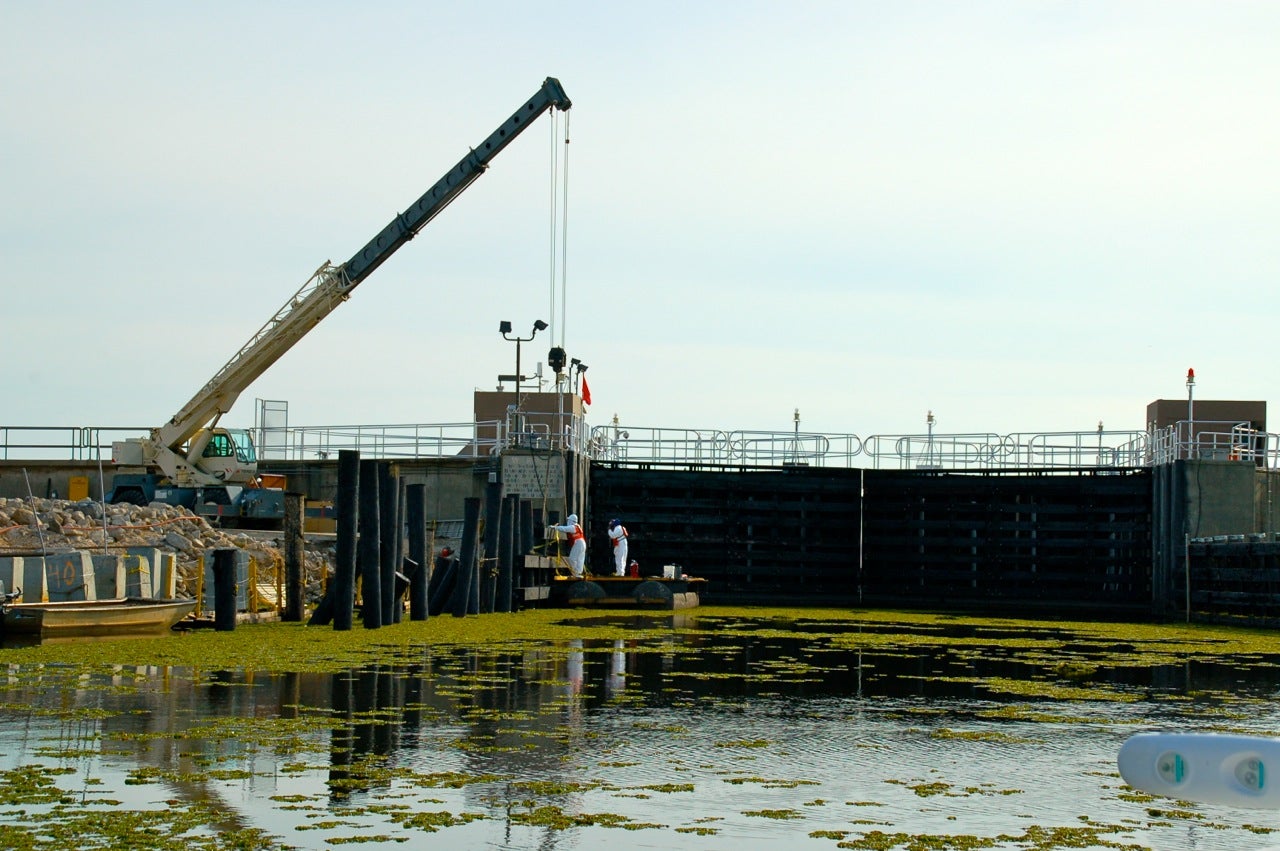 Hydrologic restoration improves freshwater flows to reduce or prevent harmful saltwater intrusion. These projects control salinity levels, preventing the die-off of freshwater plants and trees. Hydrologic restoration projects can also help maintain optimal salinities needed for the success of other restoration types, such as oyster reef and marsh creation projects.
Hydrologic restoration improves freshwater flows to reduce or prevent harmful saltwater intrusion. These projects control salinity levels, preventing the die-off of freshwater plants and trees. Hydrologic restoration projects can also help maintain optimal salinities needed for the success of other restoration types, such as oyster reef and marsh creation projects.
Marsh Creation
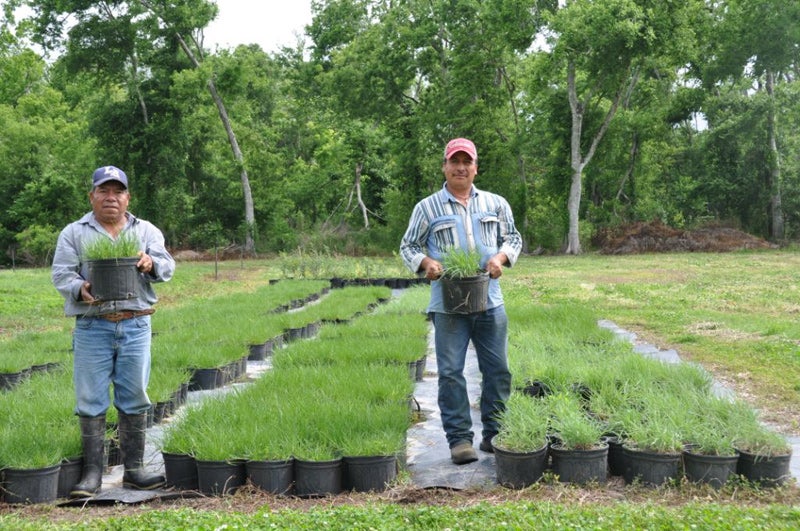 Marsh creation or “dredging” uses sediment from the Mississippi River, nearby water bottoms or offshore shoals to build land in shallow, open water areas, typically where land has been lost. These projects can build land fairly quickly, but will eventually fall victim to the same process that caused the land to disappear originally. This type of project can be used in conjunction with sediment diversions to trap sediment, and sediment diversions can lengthen the lifespan of marsh creation projects by providing a continual source of sediment to the new marsh surface.
Marsh creation or “dredging” uses sediment from the Mississippi River, nearby water bottoms or offshore shoals to build land in shallow, open water areas, typically where land has been lost. These projects can build land fairly quickly, but will eventually fall victim to the same process that caused the land to disappear originally. This type of project can be used in conjunction with sediment diversions to trap sediment, and sediment diversions can lengthen the lifespan of marsh creation projects by providing a continual source of sediment to the new marsh surface.
Freshwater Diversions
Freshwater diversions restore the historic processes that once helped sustain wetlands by channeling fresh water from the river into nearby basins. This project type helps maintain and increase the health of existing wetlands over the long term by reducing salter intrusion, preventing the loss of highly productive freshwater marshes and swamps in the upper ends of the estuary. Freshwater diversions work with hydrologic restoration projects to maintain optimal salinities and lengthen the lifespan of marsh creation projects.
Ridge Restoration
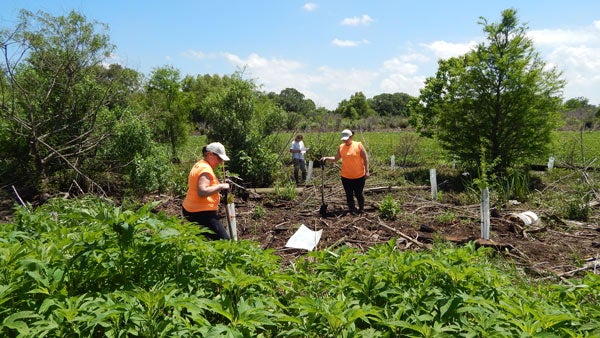 A ridge is a strip of land, usually a remnant of the bank of an abandoned bayou or stream, which is naturally elevated above the marsh surface and typically populated with trees. Restoring ridges can protect important habitat, provide storm surge protection to nearby communities and help prevent saltwater intrusion into freshwater wetlands. Ridge restoration projects can work with hydrologic restoration projects to reestablish historic salinities within the basin, reduce shoreline erosion of marsh creation projects and trap sediment from sediment diversions to help build land more quickly.
A ridge is a strip of land, usually a remnant of the bank of an abandoned bayou or stream, which is naturally elevated above the marsh surface and typically populated with trees. Restoring ridges can protect important habitat, provide storm surge protection to nearby communities and help prevent saltwater intrusion into freshwater wetlands. Ridge restoration projects can work with hydrologic restoration projects to reestablish historic salinities within the basin, reduce shoreline erosion of marsh creation projects and trap sediment from sediment diversions to help build land more quickly.
Barrier Island and Headland Restoration
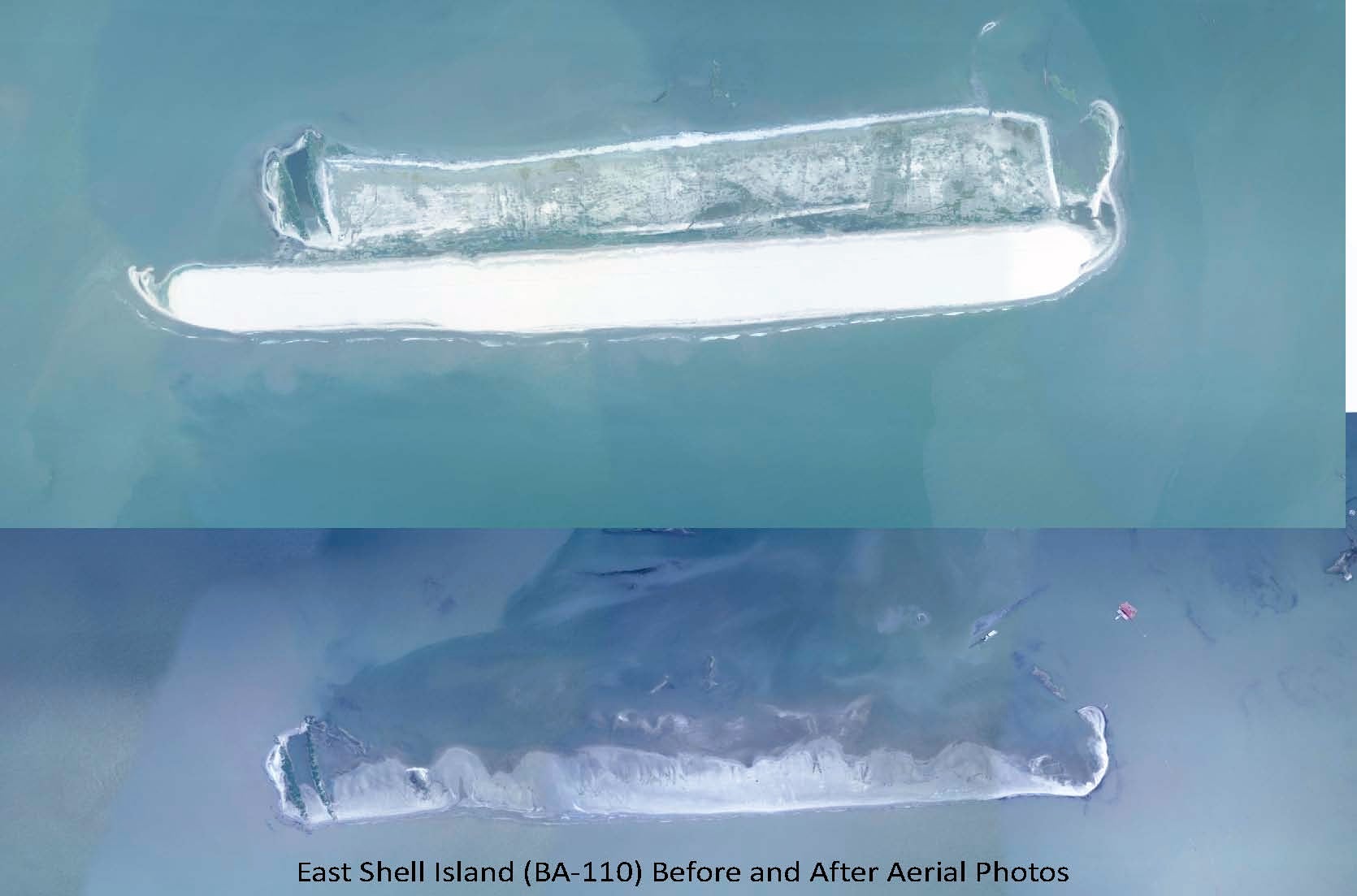 Barrier islands and headlands are an essential first line of defense against storms. These projects use sand to rebuild and restore beaches and dunes, creating or enhancing important wildlife and shorebird habitats and sheltering inland wetlands from erosion. Barrier island restoration can also increase the lifespan of marsh creation projects by providing a buffer against wave action and tidal flows.
Barrier islands and headlands are an essential first line of defense against storms. These projects use sand to rebuild and restore beaches and dunes, creating or enhancing important wildlife and shorebird habitats and sheltering inland wetlands from erosion. Barrier island restoration can also increase the lifespan of marsh creation projects by providing a buffer against wave action and tidal flows.
Oyster Reef Restoration
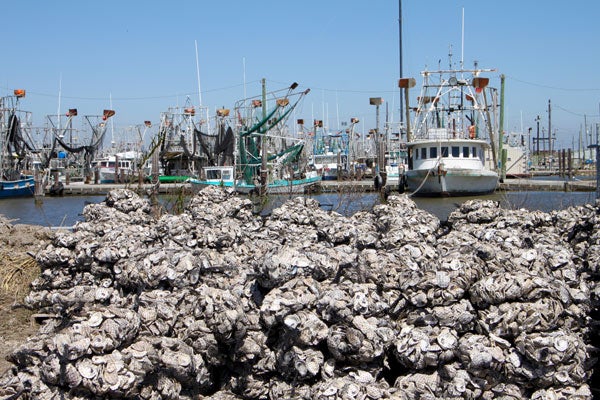 Oyster reef restoration uses natural and man-made materials to encourage the establishment of oysters to create living shorelines. Oyster reefs have the advantage of long-term sustainability, continuing to grow vertically to offset relative sea level rise, while providing significant fisheries habitat and improving water quality. Robust oyster reefs can reduce waves on adjacent wetlands, thereby reducing erosion on marsh creation and barrier island restoration projects.
Oyster reef restoration uses natural and man-made materials to encourage the establishment of oysters to create living shorelines. Oyster reefs have the advantage of long-term sustainability, continuing to grow vertically to offset relative sea level rise, while providing significant fisheries habitat and improving water quality. Robust oyster reefs can reduce waves on adjacent wetlands, thereby reducing erosion on marsh creation and barrier island restoration projects.